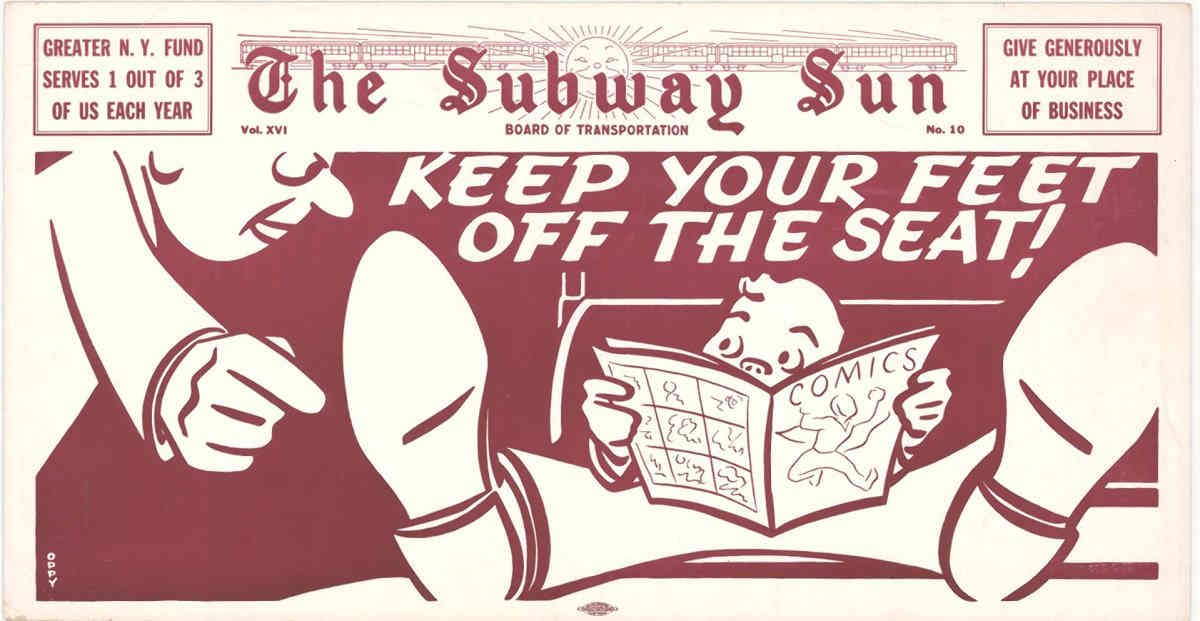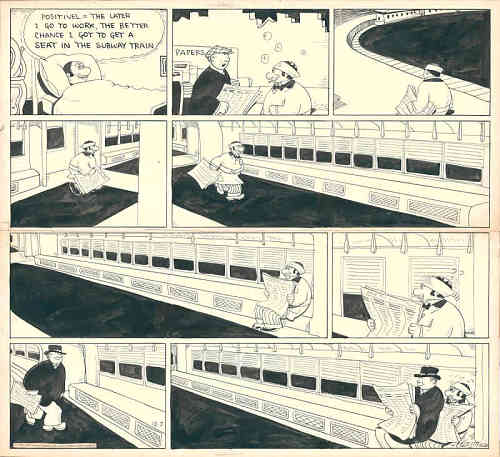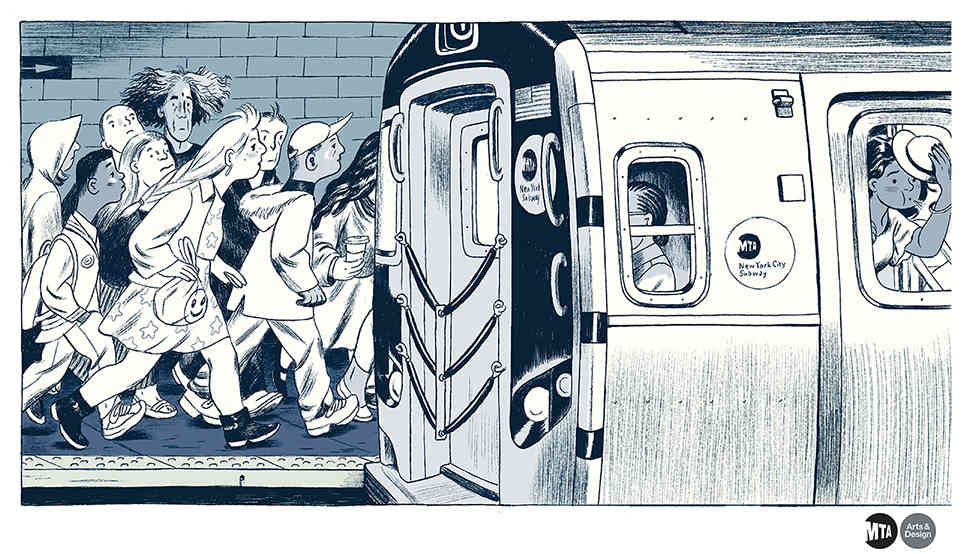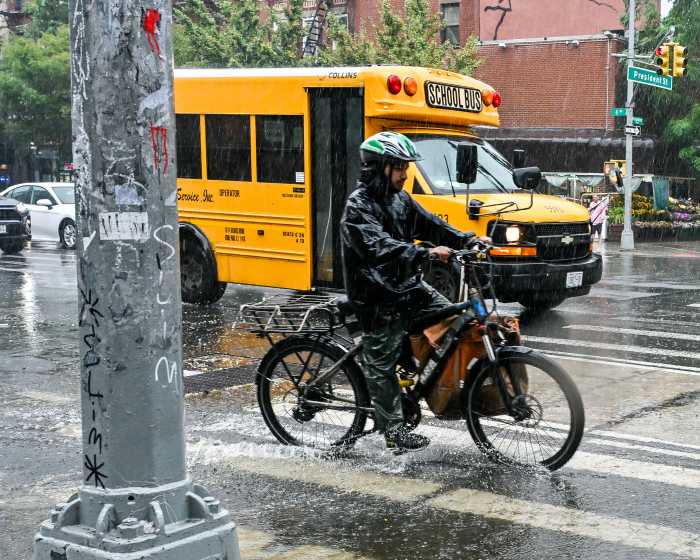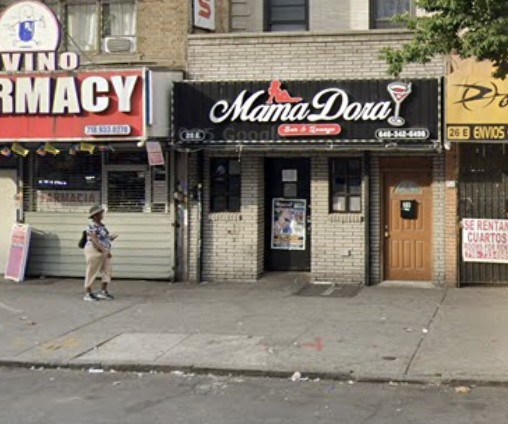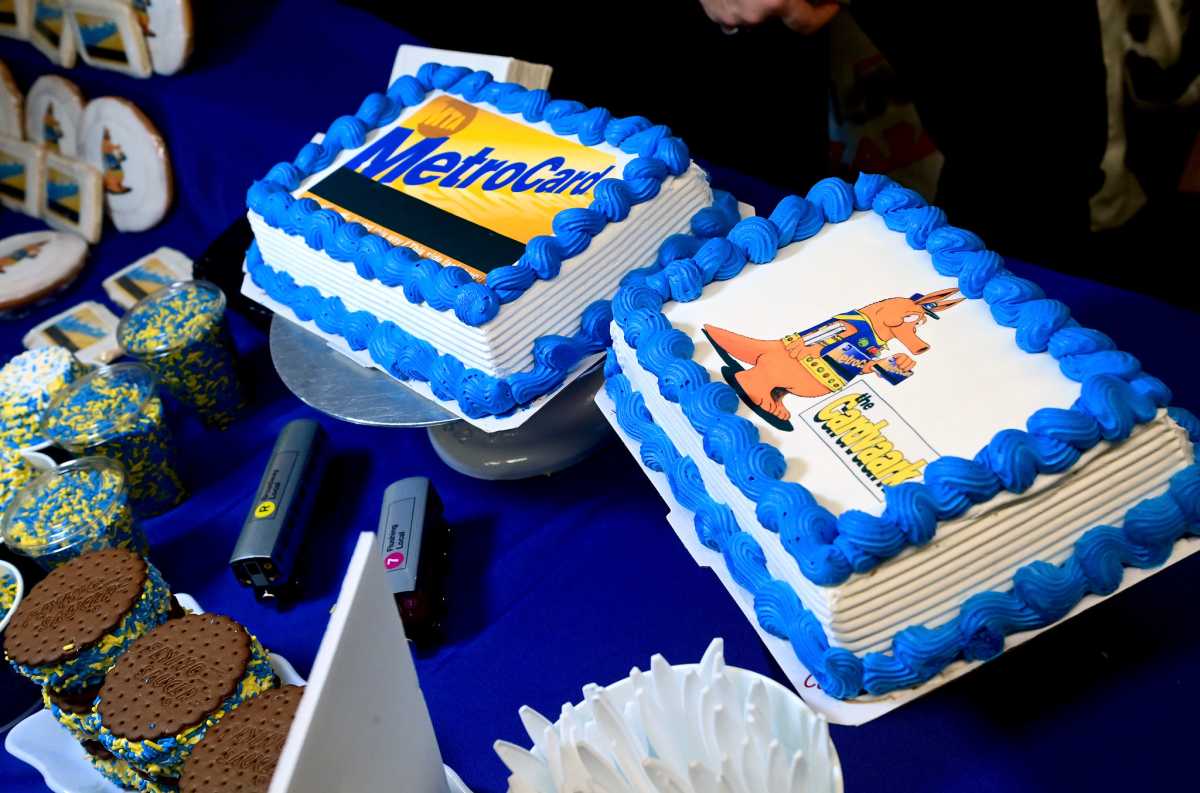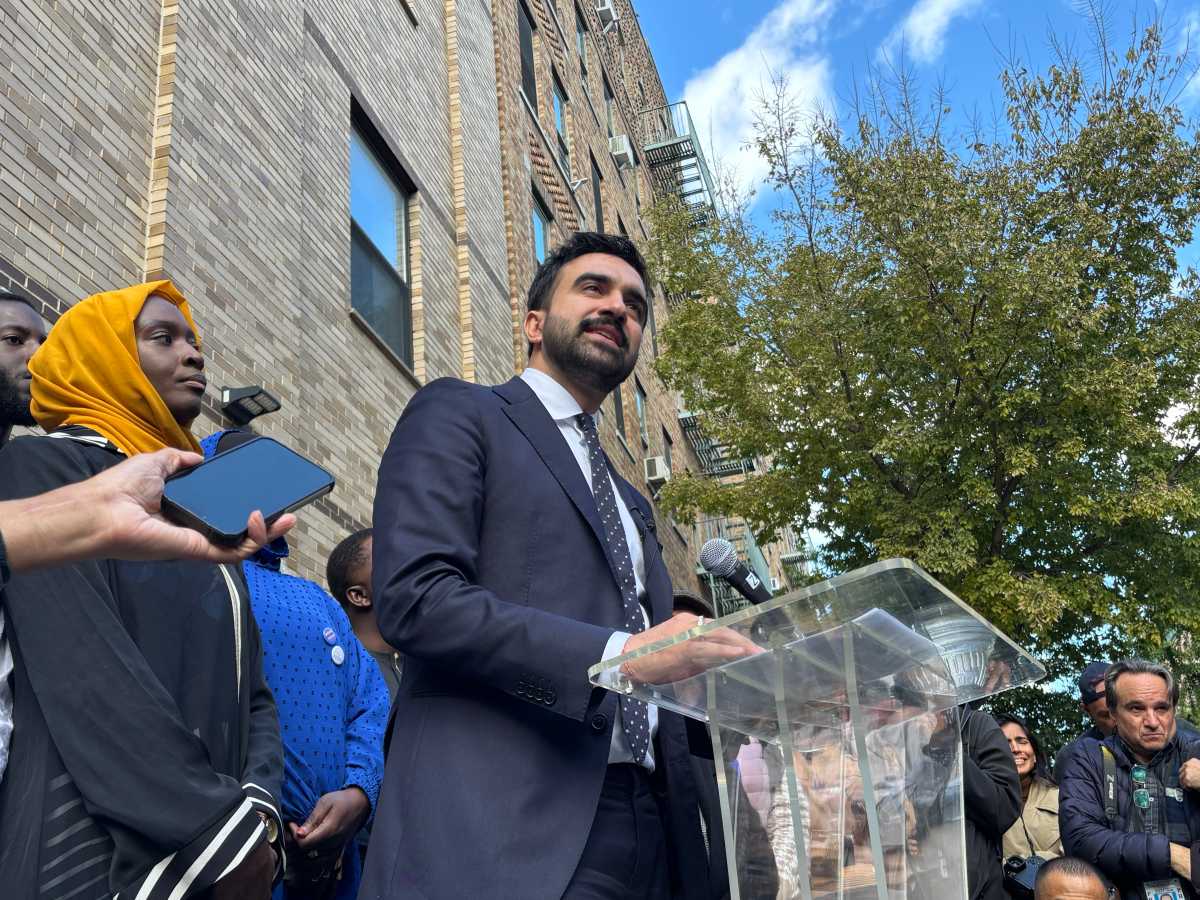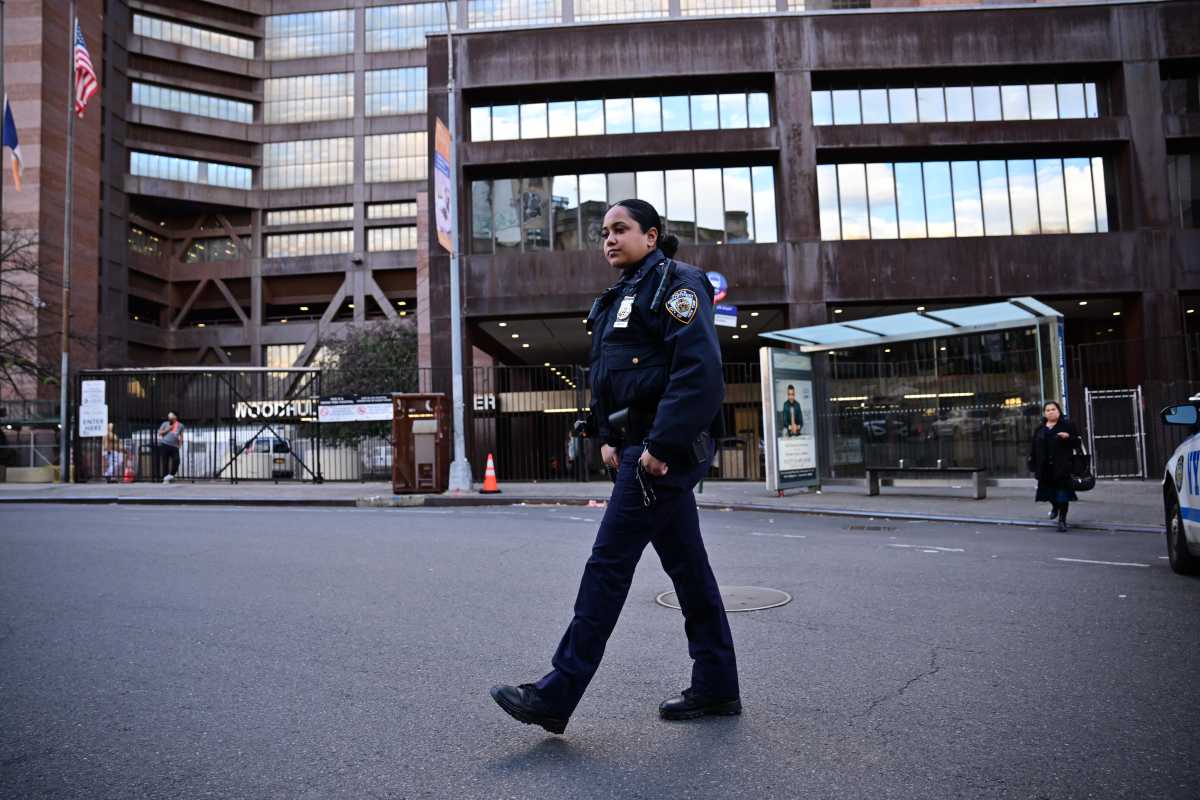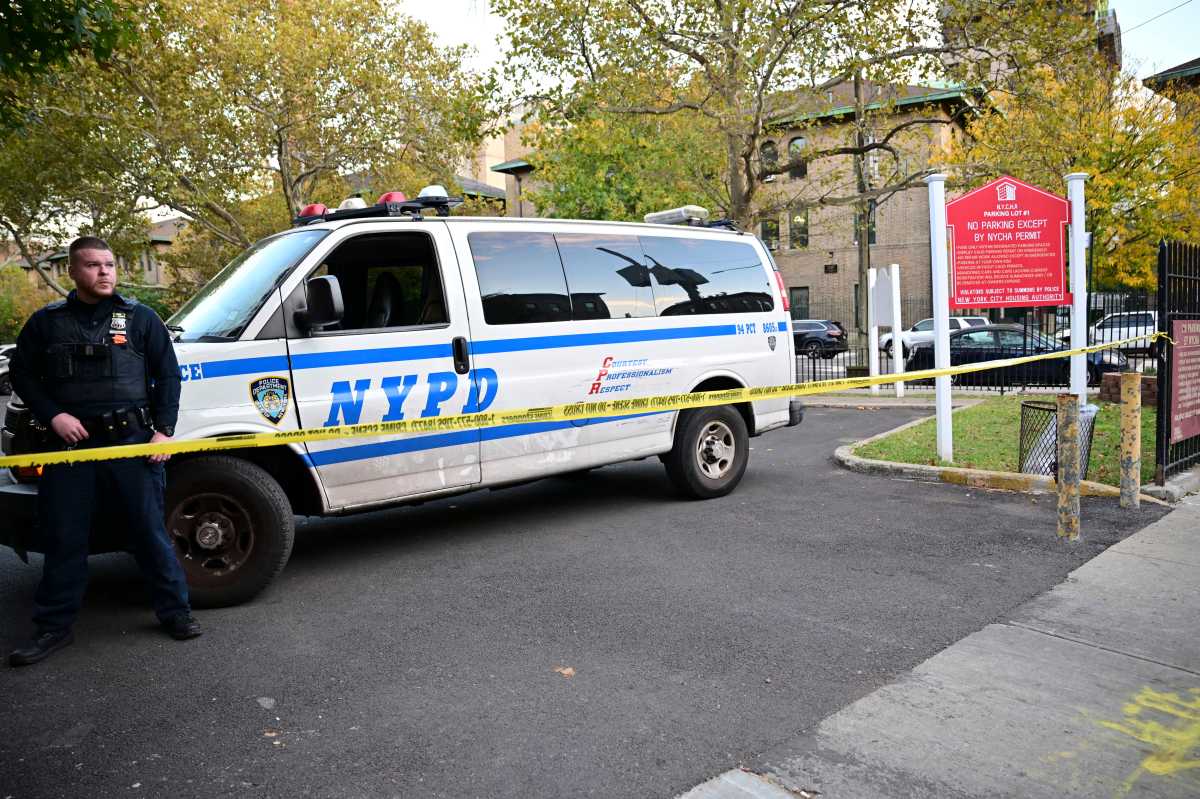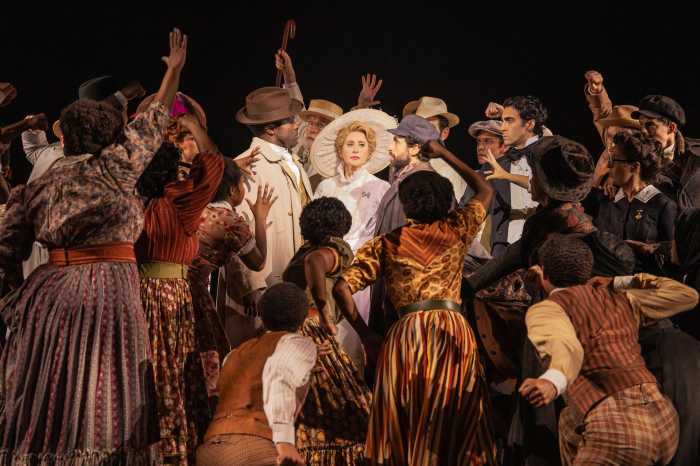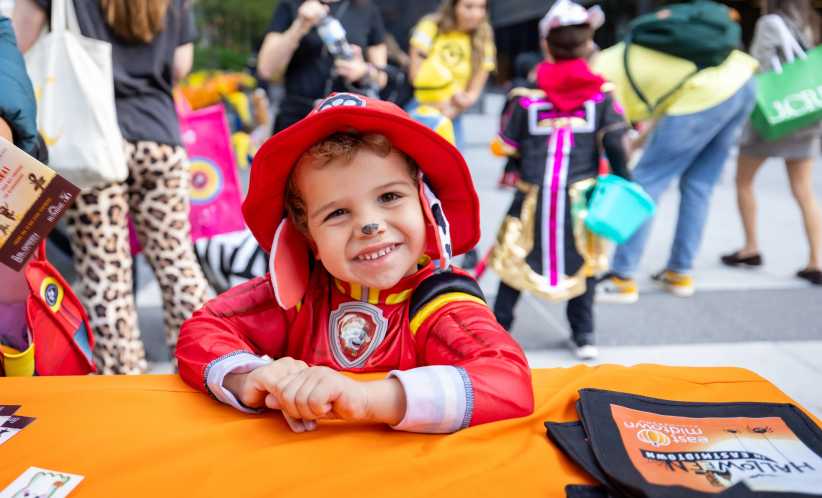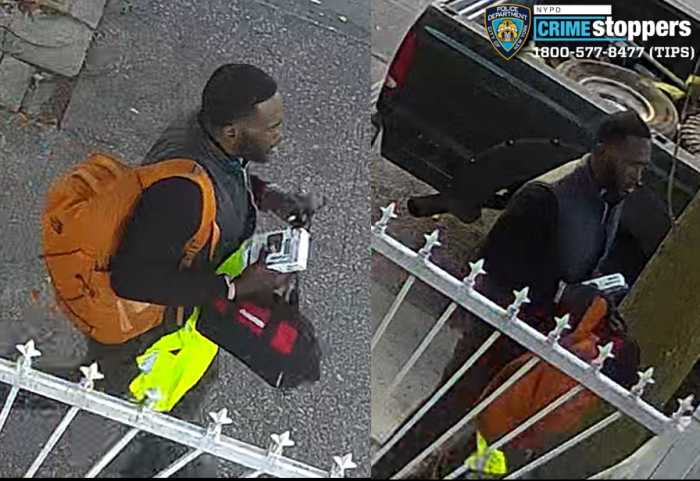These drawings have been given a new platform!
A new exhibit literally illustrates the growth of the city’s transit system over the last 150 years, as shown in cartoons and comic books. “Underground Heroes: New York Transit In Comics,” on display at the New York City Transit Museum, tracks the parallel development of comic strips and the city’s transportation options, said its curator.
“You could say that New York’s transit system and comic books grew up together,” said Jodi Shapiro. “Mass media such as newspapers were gaining popularity just as the elevated lines were being built in the city in the mid-1800s.”
The exhibit features the work of 120 artists and writers, including editorial cartoons, advertisements, newspaper strips, and comic books, ranging from the 19th century to a graphic novel published last month. A few of the pieces emerged from the Transit Museum’s archives, said Shapiro, including a few charming guides to using the subway by an artist who should be better known.
“There was also some work in the museum’s collection that more people needed to see, like that of Amelia Opdyke Jones,” said Shapiro. “She had a long career in comics and illustration, but her most recognizable work was for the Subway Sun, an information campaign that was in buses and subway cars. And she’s credited with coining the word ‘litterbug.’ ”
Other highlights in the show, said Shapiro, include work by “Little Nemo in Slumberland” creator Winsor McCay, “Zippy” comic strips by Bill Griffith, and a series of autobiographical comics by Alisa Harris.
Harris, who depicts her day-to-day life in New York City in the comic “Urban Nomad,” often draws her commute and frustrations with fellow passengers. She said she is thrilled to be part of the exhibit, and to see how each artist has their own spin on the subway system.
“I’m very excited to have my work included in this show,” said Harris. “I just like the variety and seeing many different styles of work — because everyone’s looking at similar things, but we all have our own view of it, through our own filters of what we see.”
Many of the comics show how attitudes to the subway have remained consistent. For instance, a comic from 1909 complains about overcrowding, while another from 1933 grumps about passengers who crowd too close, even when the car is empty. Showing how concerns have both changed and stayed the same is one of the goal of the exhibit, said Shapiro.
“Visitors can learn about how people’s attitudes towards public transportation changed in some ways over the years, and how it stayed the same in some other ways,” she said.
Many of the artists in early comic books were recent immigrants, said Shapiro, who were not welcome in fine art schools. Instead, they developed their skills in the “lowbrow” field of comics, and used their pens to depict the world they traveled through.
“They lived in neighborhoods in Brooklyn or lower Manhattan, and drew the things they saw and did every day, so in that respect they brought the real New York to the thousands of people who read [comic] books, as opposed to the hundreds who might have seen a painting,” she said.
“Underground Heroes: New York Transit In Comics” at New York City Transit Museum [99 Schermerhorn St. at Boerum Place in Brooklyn Heights, (718) 694–1600, www.nytra
